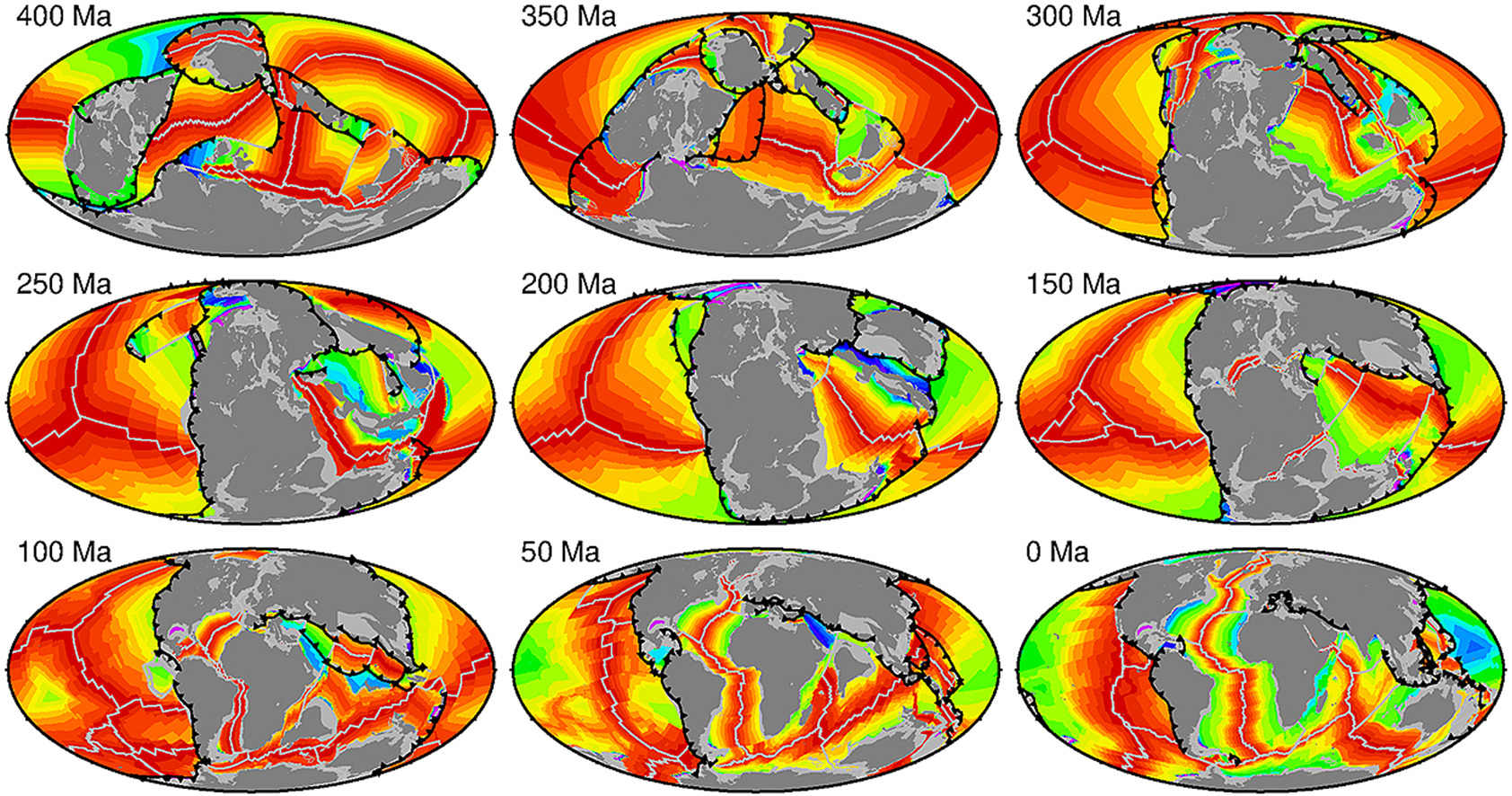
Abstract: Reconstructions of past seafloor age make it possible to quantify how plate tectonic forces, surface heat flow, ocean basin volume and global sea-level have varied through geological time. However, past ocean basins that have now been subducted cannot be uniquely reconstructed, and a significant challenge is how to explore a wide range of possible reconstructions. Here, we investigate possible distributions of seafloor ages from the late Palaeozoic to present using published full-plate reconstructions and a new, efficient seafloor age reconstruction workflow, all developed using the open-source software GPlates. We test alternative reconstruction models and examine the influence of assumed spreading rates within the Panthalassa Ocean on the reconstructed history of mean seafloor age, oceanic heat flow, and the contribution of ocean basin volume to global sea-level. The reconstructions suggest variations in mean seafloor age of ∼15 Myr during the late Palaeozoic, similar to the amplitude of variations previously proposed for the Cretaceous to present. Our reconstructed oceanic age-area distributions are broadly compatible with a scenario in which the long-period fluctuations in global sea-level since the late Palaeozoic are largely driven by changes in mean sea-floor age. Previous suggestions of a constant rate of seafloor production through time can be modeled using our workflow, but require that oceanic plates in the Palaeozoic move slower than continents based on current reconstructions of continental motion, which is difficult to reconcile with geodynamic studies.
Citation: Williams, S., Wright, N.M., Cannon, J., Flament, N., Müller, R.D., Reconstructing seafloor age distributions in lost ocean basins, Geoscience Frontiers, https:// doi.org/10.1016/j.gsf.2020.06.004.
To download the paper, click here. For access to the data, click here.
![]()
